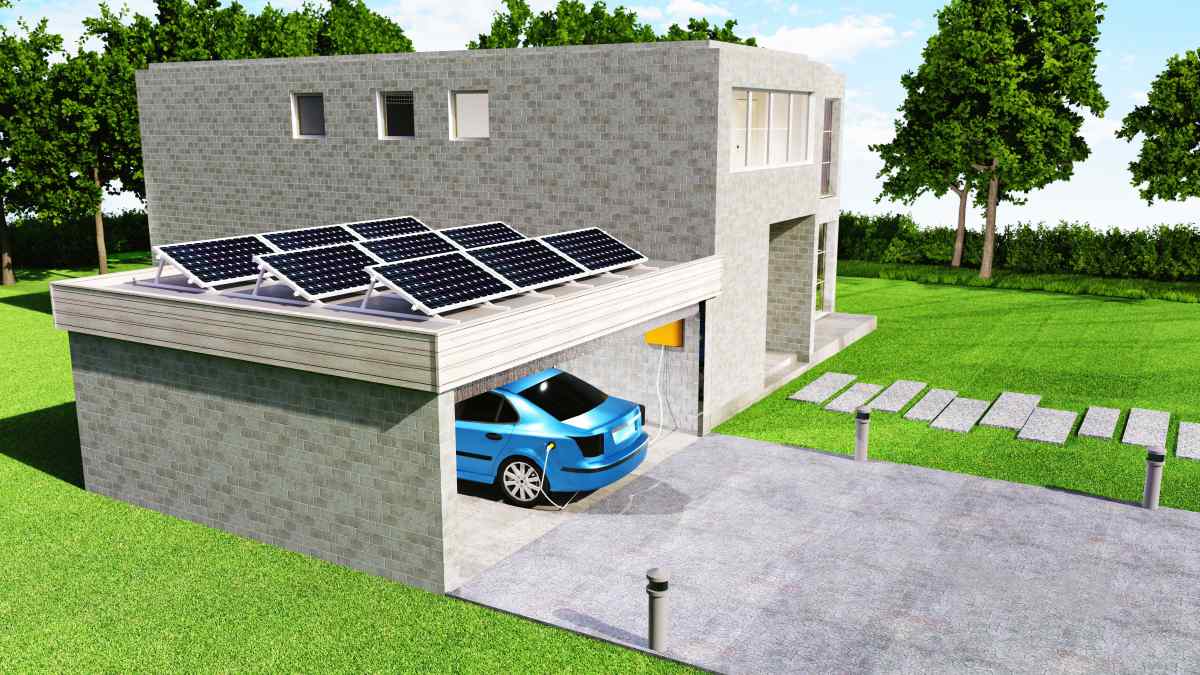Many once common single-use plastic items are now banned in Victoria. Here are sustainable, reusable alternative products to use instead.
Infrastructure Victoria’s 2050 plan

The state’s key infrastructure body releases its 30-year plan for a greener Victoria.
The state’s leading infrastructure body has laid out an ambitious plan for a cleaner and greener Victoria, including an end to petrol-fuelled cars and a zero-emissions target by 2050.
Infrastructure Victoria’s newly released draft 30-year development strategy makes 95 recommendations to the state government covering a broad range of issues including public transport, sustainability, renewable energy, waste and recycling and social housing.
Key among them is setting a target date of 2050 to achieve zero emissions by phasing out all fossil-fuel-powered vehicles, starting with new government fleet vehicles and public buses.
Other recommendations include mandating an eight-star energy-efficiency rating for all new homes, minimum tree-cover requirements for new suburbs on the urban fringe, and upgrading the state’s electricity grid to cope with the burgeoning uptake of domestic rooftop solar and renewable power from solar and wind farms.
RACV’s senior manager transport, planning and infrastructure, Peter Kartsidimas, says Infrastructure Victoria has set out a clear plan for creating a clean energy future for the state.
“We welcome the range of initiatives that will make renewables a more significant component of our energy market,” Peter says.
“We are pleased to see a focus on energy efficiency in the home, recognising that home building and maintenance can play a large role in reducing energy use for Victorian households.”
He says RACV also supports proposed initiatives to encourage increased uptake of electric vehicles by removing registration fees for no-emissions vehicles and expanding public EV-charging infrastructure.

The report recommends fossil-fuel-powered vehicles should be phased out by 2050.
Among a raft of public transport recommendations, the report urges the state government to press ahead with development of the Metro 2 rail link, which it says should be completed within 15 years to meet anticipated demand. Infrastructure Victoria predicts public-transport use will increase by as much as 62 per cent by 2036.
Peter says RACV has been calling on the government for many years to commit to the tunnel, which would link Clifton Hill through the CBD to Fishermans Bend then out to Laverton.
Other transport proposals detailed in the Infrastructure Victoria plan include the immediate abolition of Melbourne’s free tram zone to reduce overcrowding, a congestion charge for cars in the CBD, ending free parking at train stations, and building new train and tram lines to service fast-growing outer suburbs.
The report also recommends a major upgrade of cycling infrastructure in Melbourne, Geelong, Bendigo and Ballarat with separated bike lanes and more bike parking at train stations.
Infrastructure Victoria’s chief executive Michel Masson says the COVID crisis has created a seismic shift in how Victorians live and work, and a new opportunity to rethink and reset infrastructure planning.
“Now is the time to harness the positive changes we’ve seen and facilitate a transition to a better new normal,” he says. “Our draft 30‐year strategy shows how integrated infrastructure planning combined with strategic investment can support positive change. For example, greater uptake of zero‐emissions vehicles, more cycling and walking for transport, and increased use of renewable energy will not only reduce pollution but provide many public benefits.”
He says well-planned infrastructure can also help tackle disadvantage, especially in outer-metropolitan and regional areas, by providing better public-transport options and improved access to services.
The draft 30-year strategy is open to community feedback until 26 February 2021 and will be presented to the government in the middle of next year.
Infrastructure Victoria’s key recommendations at a glance:
Energy
- All new homes to be to eight-star energy rated by 2025.
- Existing homes for sale or rent to disclose the property energy rating.
- Introduce gas-free housing estates and scrap mandatory gas connections for new homes.
- Upgrade electricity grid for new renewable energy.
Urban planning
- New suburbs to have 30 per cent tree-canopy cover.
- More low-income and social housing.
- Create an interconnected green-space network.
Transport
Cars
- Phase out all internal-combustion engines by 2050.
- All new public buses and government fleet vehicles to be zero emission in five years.
- Congestion charges in the CBD and on all new freeways.
- End free parking at train stations and park-and-rides.
- Replace fixed charges (such as vehicle registration) with variable distance-based and congestion charges.
Roads
- Construct the long-awaited outer-metropolitan ring road and include a rail corridor.
Public transport
- Reconfigure the rail city loop for more cross-city train services by 2025.
- Scrap the CBD free tram zone and redesign existing tram routes.
- Provide tram links to Fishermans Bend by 2026 and within five years commit to delivering a tram-route extension to Arden and the former defence site in Maribyrnong if required.
- Business case for the Metro 2 rail link to be completed in five years, so it can be ready to meet expected demand in 15 years.
- Make off-peak fares permanent on the public-transport network and offer cheaper fares for trams and buses at all times.
Cycling
- Build separated cycleways in Melbourne, Ballarat, Bendigo and Geelong in the next five years.
- Create more bike parking at train stations.
Regional Victoria
- Revive the Murray Basin Rail Plan.
- Invest in nature-based and Indigenous tourism.
- Improve digital connectivity.
- Within two years set funding certainty for regional road maintenance and upgrades.
- Fund an ongoing regional-rail freight-maintenance program.
- Upgrade power supply for agriculture and regional manufacturing.




